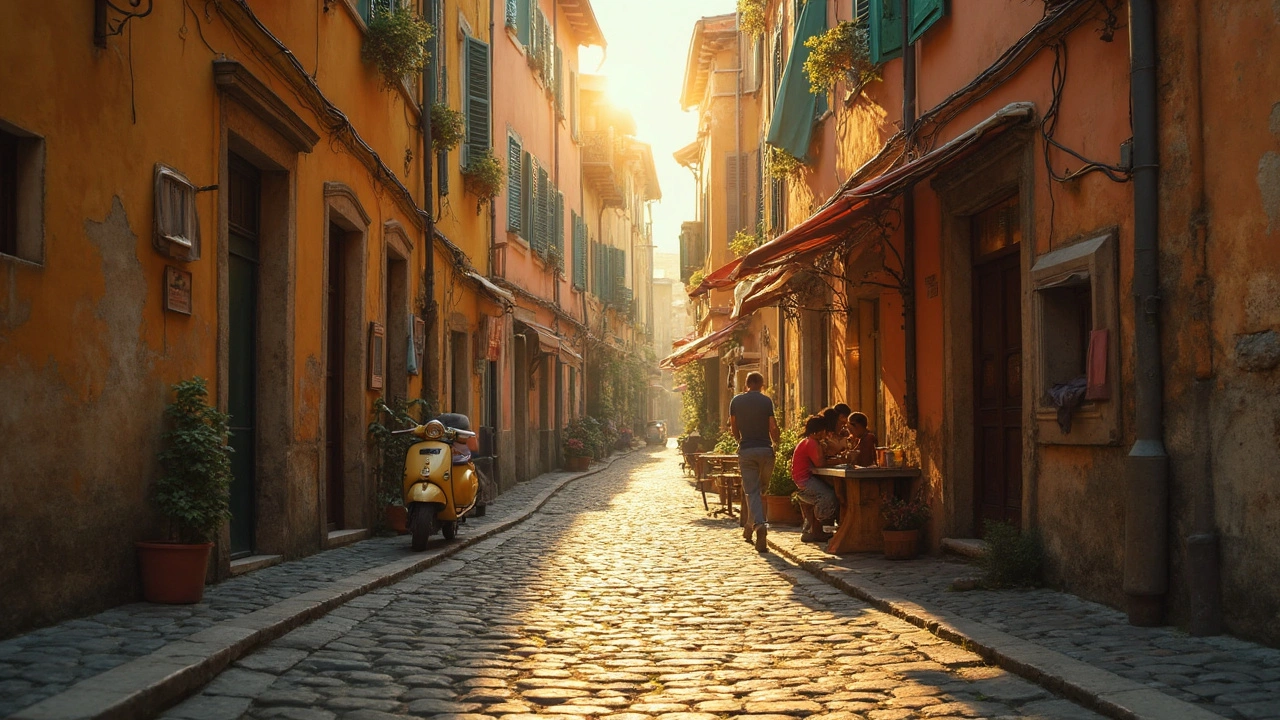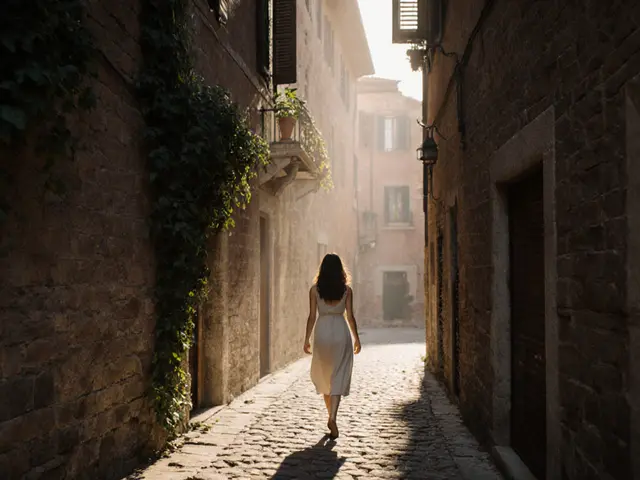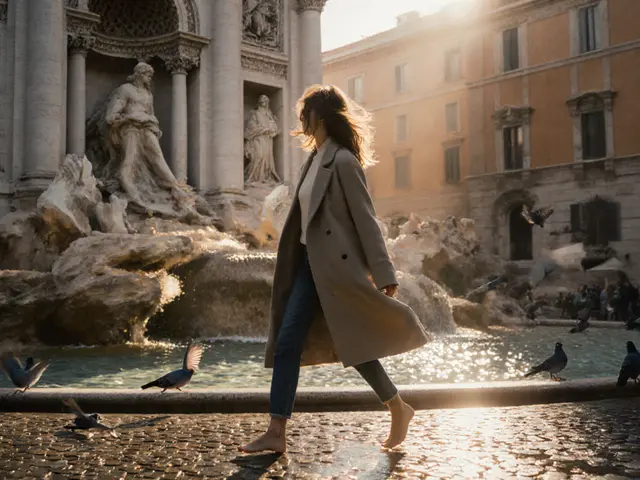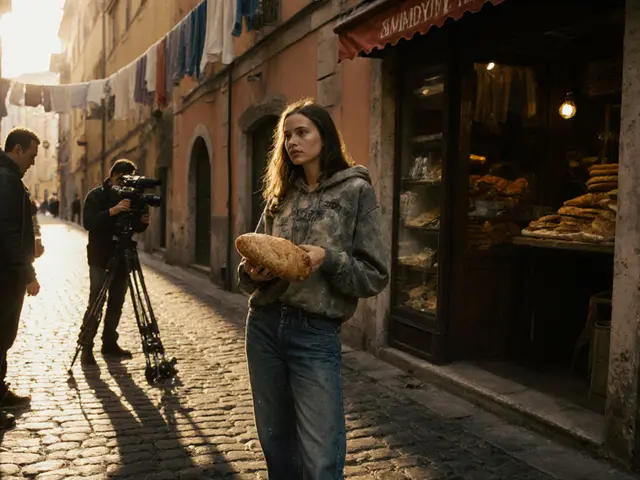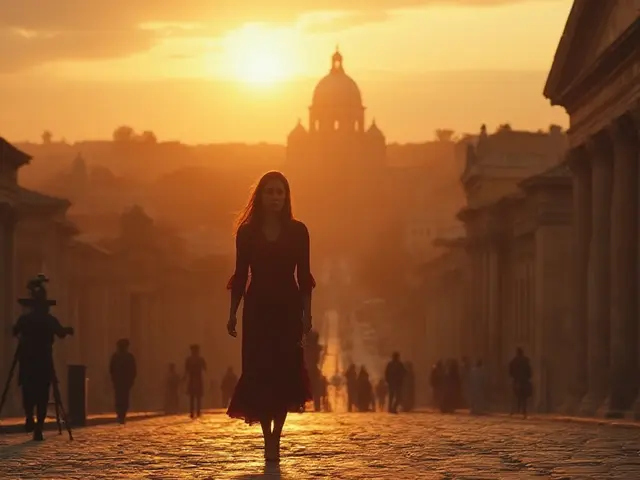Ever wonder what Rome looks like when you scrape off the polished tourist layer? That’s exactly what we’re after—skip the lines at the Colosseum and dig into the secrets only a handful of locals and insiders know. You don’t need fancy Italian or big money, just a curious spirit and maybe some good walking shoes.
Finding the heart of Rome isn’t about expensive museums or crowded piazzas. It’s those neighborhoods where you stumble on a street artist adding new colors to a wall, or an old bakery still throwing out warm maritozzi before sunrise. You want your first coffee of the day away from the selfie sticks? There’s a corner for that, and it’s usually just five minutes off the main roads—if you know where to look.
- Who is Malena Nazionale?
- Hidden Corners Most Tourists Miss
- Street Food and Local Eats
- Lively Nights and Unexpected Parties
- Offbeat Art and Culture Finds
- How to Blend in Like a True Roman
Who is Malena Nazionale?
When Italians talk about Malena Nazionale, they aren’t just chatting about another influencer or minor celebrity. Malena, whose full name is Filomena Mastromarino, shot to real popularity years ago as an adult film actress and later found her way into mainstream Italian TV, podcasts, and pop culture debates. She stands out because she’s not shy about sharing real slices of modern Italian life—sometimes raw, sometimes hilarious, sometimes uncomfortable.
Born in 1983 in Bitonto, down in southern Italy, Malena’s life wasn’t always cameras and red carpets. She studied law before jumping into something nobody in her small town expected: adult films. This move made her famous, or infamous, depending on who’s talking. But Rome is a city that loves reinvention, and Malena fit right in when she moved there. These days, she’s better known as Malena Nazionale—meaning she’s a household name, not just in certain circles but across the city’s nightlife, political debates, and even mainstream talk shows.
It’s this mix of grit and charm that makes her a sort of unofficial guide for those looking to experience the real Rome. She talks about local bars, hidden markets, after-hours clubs, and the stuff regular travel blogs leave out. So, if you’re on the lookout for places where locals actually hang out or how to spot an authentic Roman trattoria, following Malena’s take can save you from basic tourist traps.
Here’s a quick look at how her story connects with the mood of the city:
| Malena Fact | How It Relates to Rome |
|---|---|
| Lived in different parts of the city | Knows real neighborhoods, not just the postcard spots |
| Appeared on talk shows and reality TV | Understands the city’s shifting pop culture and attitudes |
| Started in the south, made it big in Rome | Represents that classic "Roman mix"—locals and newcomers mingling |
The point? Don’t expect only glossy recommendations from her. Malena Nazionale’s tips and takes come with street-level honesty, making her kind of the unofficial ambassador for hidden Rome gems and a no-BS approach to the city’s vibe.
Hidden Corners Most Tourists Miss
Rome's biggest magic shows up once you ditch the obvious routes. If you’re tired of standing in line at the big landmarks, let’s talk about places where locals hang out and you barely see a map-waving crowd. Here’s where you find those hidden gems that even some Romans haven't checked out.
Start with the Quartiere Coppedè. It looks nothing like the rest of the city—mashup of Art Nouveau, medieval arches, and even a touch of fantasy. The place feels like a movie set, but barely anyone’s there aside from the neighbors walking their dogs. Perfect place for weird photos, and nobody’s rushing you to move along.
Trastevere is popular, but dig a little deeper into the side alleys after dusk. That’s when you spot small wine bars with zero English on the menu. You’ll probably bump into some old-timers playing cards, and honestly, that's more Roman than half the stuff in guidebooks.
If you’re big on views but hate crowds, skip the Spanish Steps and climb up to the Orange Garden (Giardino degli Aranci) on Aventine Hill. You get a killer look at the city, with lemon and orange scents from the trees and, best of all, quiet. On clear days, bring a sandwich and make it your chill-out spot.
Another clutch spot? The Cimitero Acattolico—Rome’s so-called Non-Catholic Cemetery. Not spooky at all, and this place holds an odd peaceful vibe, full of wild cats, ivy, and some famous graves (Keats and Shelley if you’re into poets, but you don’t need to be). It’s just a cool break from the usual noise and chaos.
- Testaccio Market: No tour groups, just real local flavor—pick up meats, cheese, or porchetta sandwiches.
- Via Piccolomini: Head here at sunset. The view of St. Peter’s dome actually looks bigger the farther you walk away. Trust me, it’s weird but true.
- Antico Caffè Greco: Oldest café in Rome, packed with art history vibes. Hang out at the bar like a regular for a real Roman espresso.
Locals love to keep these spots low-key. The more you act like you belong, the more this side of Rome opens up. Try to blend in, keep your phone away, and you’ll end up with stories nobody else has.
Street Food and Local Eats
If you want to eat like a real Roman, forget the overpriced pasta spots by the Trevi Fountain. The real flavors of Rome (and true Malena Nazionale energy) are out on the streets, in tiny shops, and at lively markets.
Let’s start with one of Rome’s undisputed street food kings: supplì. Think of them as deep-fried rice balls, usually stuffed with gooey mozzarella and ragù. You’ll spot locals grabbing these at tiny fry shops like Supplizio (Via dei Banchi Vecchi, 143). One Euro, two bites, and you’ll wish you grabbed more.
Next spot to hit—Testaccio Market. This place is the heartbeat of Roman food culture. It’s not just about fresh produce—stand in front of Mordi & Vai and try their famous panino stuffed with slow-cooked beef. Not far away, the Da Artenio bakery is always packed for a reason: their pizza bianca is perfectly crispy, chewy, and just salty enough.
Pizza al taglio is another staple. It means ‘pizza by the slice,’ but don’t expect big greasy wedges. Here, it’s all about square, Roman-style slices, topped with everything from classic potato to zucchini blossoms. Bonci Pizzarium near the Vatican is gold—grab a few slices and eat them standing out front like everyone else.
Rome isn’t shy about sweets either. At Pasticceria Regoli, maritozzi—sweet buns loaded with whipped cream—fly off the shelves before noon. They might look simple, but they’re a Roman tradition for breakfast, and even locals will line up on weekends.
Locals usually skip the big dinners out and just nibble as they walk. Go early if you want the good stuff—Testaccio Market starts filling up by 10 AM. Try carrying some loose change and small bills, since many of these places don’t take cards. And don’t hesitate to ask the old-timers what’s fresh that day—they’ll point you right to the best bite.
Here’s a quick look at where locals grab their favorite street eats:
| Food | Best Spot | Price Range |
|---|---|---|
| Supplì | Supplizio | €1-€2 |
| Panino con bollito | Mordi & Vai (Testaccio Market) | €5-€7 |
| Pizza al taglio | Bonci Pizzarium | €3-€5 (per slice) |
| Maritozzi | Pasticceria Regoli | €2-€3 |
Trying these hidden gems is the fastest way to taste real Roman life. Don’t dress fancy, and don’t expect menus in English. Just dive in, order what looks good, and enjoy the chaos. That’s how it’s done in Malena Nazionale’s Rome.
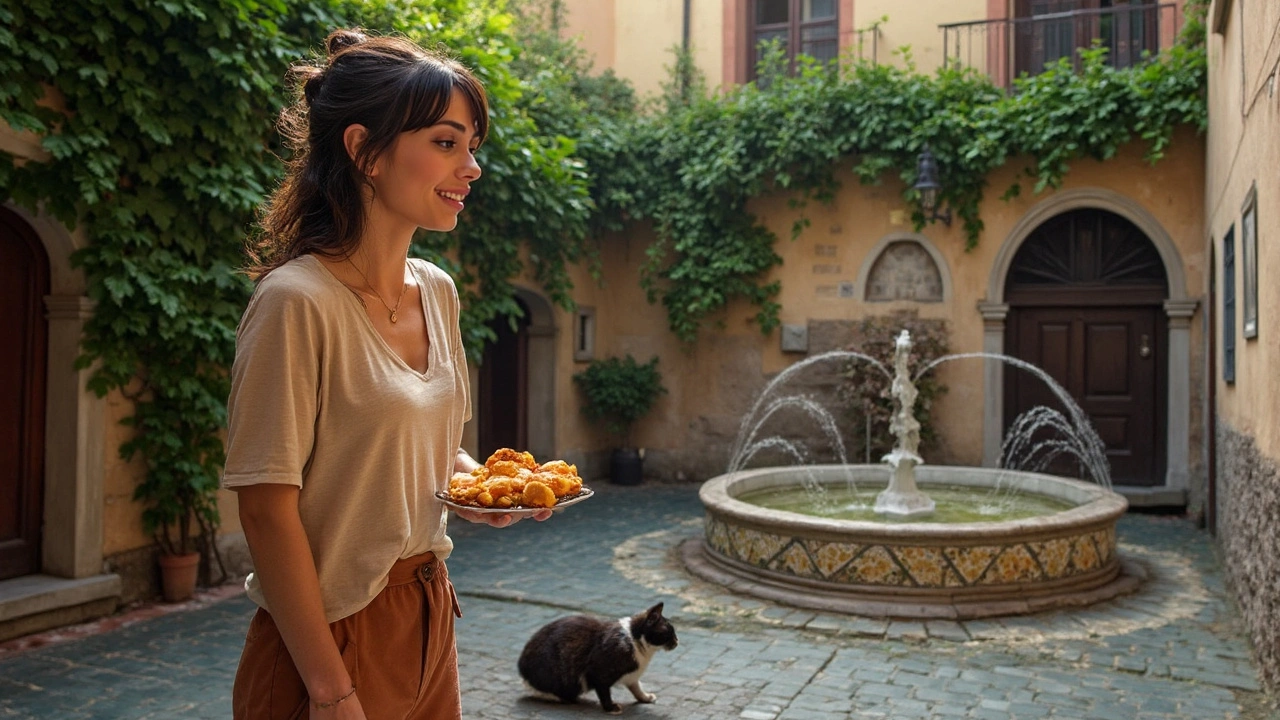
Lively Nights and Unexpected Parties
Rome isn’t just about winding streets and ancient ruins. When the sun dips, the city flips a switch—locals and die-hard visitors know the real fun starts after dark. Sure, you’ve seen bars in Trastevere, but let’s get real, there’s a whole other layer most tourists miss. That’s where Rome actually lives.
Ever heard of San Lorenzo? It’s a favorite spot for students and locals, not just because beers start at €2. There’s this graffiti-covered square (Piazza dell’Immacolata) that turns into an open-air party by midnight on weekends. Most of the bars spill outside, so you end up talking to everyone from musicians to tattoo artists. No entry fees, no dress code, just pure Roman nightlife.
Testaccio is another no-nonsense neighborhood, famous for both its club scene and late-night food. If you’re after house DJs, big crowds, or just want to try the famous “panino all’alba” (a meaty sandwich at sunrise), this is where you’ll land. Big names in the DJ circuit love Testaccio’s clubs—Piper Club and L’Alibi are legends here, both known for wild parties till dawn. Just check the schedules ahead, as events rotate fast.
What about those secret pop-up parties? Malena Nazionale insiders tip: follow local musicians on Instagram or Facebook. They announce last-minute gigs in abandoned palazzos, tiny theaters, or even on the Tiber River’s floating barges. You might end up at a silent disco with headphones or an old-school karaoke battle in a wine cellar.
- Keep an eye on flyers and wall posters, especially around universities.
- Cover charges range from €5-15 at most places, and that usually gets you a drink.
- Rome’s metro stops running at 11:30pm, so prep for night buses or walk home like the locals do.
Just remember, in Rome, it’s less about where you go and more about who you meet and what you stumble onto around the next block. If you want to feel the pulse of the city, skip the tourist pubs and dive into the local scene. That’s where you’ll find the kinds of stories you’ll want to tell long after you’ve left.
Offbeat Art and Culture Finds
If you think you’ve seen all the art Rome has to offer with just the Vatican and the big museums, let me show you the hidden side that locals and folks like Malena Nazionale actually talk about. Head to Quadraro, a neighborhood packed with massive street art—murals from underground artists all over Europe. It’s an open-air gallery you can walk for free, and nobody’s hustling you to move faster.
Want a quick culture hit without crowds? Biblioteca Angelica is one of Europe’s oldest libraries, tucked behind Piazza Navona. Almost nobody goes here except hardcore book lovers and locals looking for peace. The ancient wooden shelves and hidden frescoes are worth a peek, even if you don’t open a single book.
Lately, the Testaccio district has become a go-to for weird contemporary galleries. Places like MACRO Testaccio switch up their exhibits every few months, showing edgy art lightyears away from the dusty classics you find in other spots. Seriously—one month you’ll see neon installations, another month it’s street photography or bizarre sculptures.
If you’re into music, the Auditorium Parco della Musica runs jazz nights, indie concerts, and events that never make it onto tourist brochures. In spring and fall, their outdoor gigs pull in local artists and up-and-coming bands—don’t expect any top-40 hits, but you might discover your new favorite act.
- Tip: Check out Musei Capitolini at night. They open late twice a month, and wandering marble halls after sunset is honestly cooler than sweating with the daytime crowds.
- The Pastificio Cerere Foundation in San Lorenzo has open studios—perfect if you want to meet real working artists, not just see finished products.
- Grab a ticket to a film at Cinema Farnese—it’s where real cinephiles go, and sometimes they host Q&A sessions with local directors.
| Place | What Makes it Unique | Local Tip |
|---|---|---|
| Quadraro Murals | Best open-air urban art in Rome | Go early morning for photos |
| MACRO Testaccio | Changing exhibits, edgy art | Check their online calendar |
| Biblioteca Angelica | Hidden historical library | Visit for silence and frescoes |
Once you’re tapped into these spots, you realize Rome isn’t a museum city—it’s alive and always changing. Just step off the main drag and you’ll see it with fresh eyes, Malena style.
How to Blend in Like a True Roman
If you want to experience Rome like a local, you’ve got to act like you belong. It isn’t about faking an accent or wearing expensive stuff—it’s in the small, daily things. Romans read you in a second. Walk with confidence, don’t hesitate at crosswalks, and skip the big maps in the street. Google Maps on your phone? Fine. Actual street map? Instantly marks you as a tourist.
When ordering coffee, know this: locals never order a cappuccino after 11 am. If you want to blend in, go for an espresso—just call it "un caffè." Drink it standing at the bar, don’t ask for fancy flavors or to-go cups. You pay first at most spots, take your ticket to the counter, and then order. If you sit down, it costs more. Little things, but they add up fast.
Italians eat meals at pretty set times. Lunch is usually between 1 and 2:30 pm, dinner rarely kicks off before 8 pm. Showing up at a trattoria for dinner at 6:30 pm? That’s a dead giveaway. Also, Romans don’t tip big—round up or leave a euro or two for good service, but never the 20% seen elsewhere.
Dress smart. No, you don’t need high fashion, but skip gym clothes unless you’re jogging. Locals love dark colors, clean sneakers or leather shoes, and they never wear shorts in the city—unless they’re teenagers or it’s scorching hot. Sunglasses are basically a uniform, and carrying a small bag for your stuff is common.
- Never queue politely at the bar. Just nudge in when you see an opening.
- Keep your voice down. Romans chat, but loud tourists stand out fast.
- Always greet with "buongiorno" in the morning and "buonasera" in the afternoon/evening—basic but huge for blending in.
Public transit in Rome is fine for getting around, but it can be chaotic. Stand your ground on buses, validate your ticket before boarding, and watch your bag. Locals do all three without a second thought.
| What Locals Do | What Tourists Often Do |
|---|---|
| Espresso at the bar, fast | Sit for long coffee breaks |
| Eat late dinners | Show up at 6 or 7 pm |
| No shorts in the city | Dress for vacation comfort |
| Minimal tipping | Large, American-style tips |
One last thing—don’t rush. Whether you’re ordering food or strolling the alleys, patience is key. That’s how you see the real heartbeat of Rome and why locals notice you, or don’t, in all the right ways.

